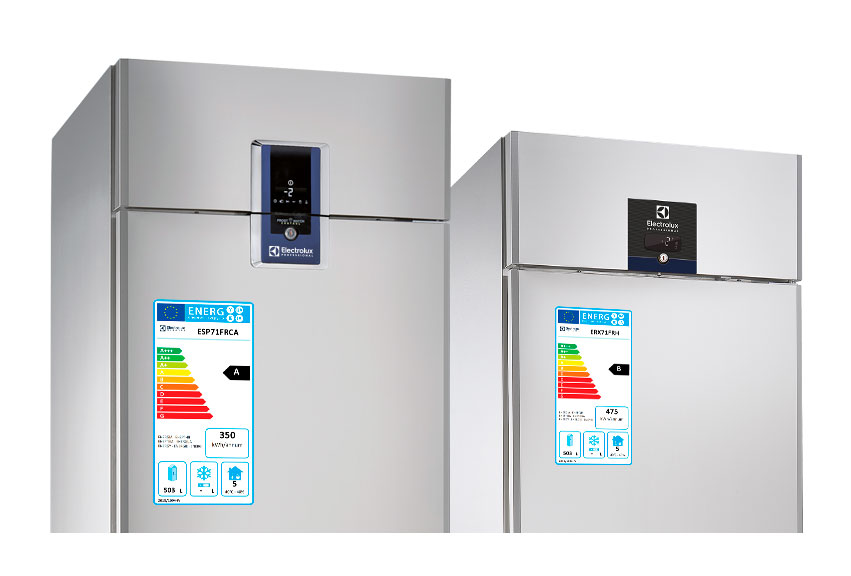Guide to choosing an energy-efficient commercial refrigerator
Commercial refrigeration can account for up to 40% of a professional kitchen’s energy consumption. Given the current high unit cost of electricity, and the fact that fridges and freezers are rarely switched off, opting for the most efficient model you can afford is more important than ever.
However, it’s not as simple as looking at the cost price and the energy label. Here are some top tips to consider for when you choose your next fridge or freezer:
Types of commercial refrigeration
Commercial fridges and freezers come in many shapes and sizes. From cabinets and counters to built-in refrigerated compartments in bespoke cooking suites, there are a wealth of options to consider.
Refrigerated cabinets offer exceptional capacity from a low footprint, and double-door variants are ideal for kitchens with a high turnover of covers. Counters, however, can also be used as an extra worksurface during busy services. This can make a real difference in small kitchens. Integrating refrigerated drawers into a cooking suite ensures prime ingredients are close at hand while also promoting an efficient workflow during busy services.
Location
However, the first consideration should be location. Understanding how to better utilise the available space is key to making the right choice. Given each food type will need its own specific appliance, the volume of commercial refrigeration required can quickly add up. With professional kitchen floorspace often at a premium, it is worth looking for units which have frontal ventilation, such as the ecostore cabinets and counters, as this enables the units to be sited against a wall without the need to leave clearance space. However, commercial refrigeration appliances should not be placed near a heat source where possible, as this may increase the electrical load and cause the unit to work harder to stay cool.

Storage capacity
Capacity is incredibly important as enough air must be able to circulate around the produce to keep it fresh. Overloading a commercial refrigerator can cause the food to spoil faster, and increase the power consumption of the unit beyond what is recommended.
Opting for higher capacity units, such as the ecostoreHP Premium cabinet which has a net capacity of 503L, could also help reduce the number of overall appliances required to free up more space and limit unnecessary utility consumption. The storage net capacity of each commercial refrigerator can be found on its energy label.
Energy consumption
Given the always-on nature of commercial refrigeration, it really does pay to purchase the most efficient model you can afford. The power consumption (kWh/annum) for each unit is one of the biggest influences on determining an appliance’s energy class, which will be rated A+++ to G as part of the revised GB energy labelling directive introduced in January 2021. However, an energy rating should only be viewed in conjunction with a commercial refrigerator’s Climate Class.

Climate Class
The Climate Class of a commercial refrigerator indicates its ability to correctly preserve food in different working conditions, and can be found on each product’s energy label. For example, Climate Class 5 is ‘heavy duty’ and shows that the appliance will maintain a uniform internal temperature in operating conditions up to 40°C and 40% relative humidity. Climate Class 4 is ‘normal duty’ (30°C / 55% humidity) and Climate Class 3 is ‘light duty’ (25°C / 60% humidity). Given the typically high temperatures experienced in a professional kitchen, operators should consider commercial refrigeration that is rated to Climate Class 4 or 5.
Conclusion
While there are a number of key considerations to weigh up when investing in energy-efficient commercial refrigeration, it is essential to also focus on a dedicated aftercare policy. End-users should scrutinise the warranty to be aware of any limitations or exclusions, while also instigating a regular cleaning and maintenance programme. Doing so will maximise the efficiency of the unit throughout its operational life and, ultimately, save more money.
